The BGSU Native Prairie Garden
What is a Prairie?
A “prairie” is far from a barren wasteland of what it may appear to be, but instead is a unique grassland with complex ecosystems and incredible environmental adaptations. Prairies are well-adapted to the climate of the continental interior, able to withstand droughts, seasonal weather, and harsh climates. The abundant grasses within prairies allows for these environments to thrive, as the different species of grasses provide food and a habitat for the hundreds of animal species that call a prairie, home.
The United States is divided into three distinct types of prairies: the eastern tall grasses, the central mixed grasses, and the western short grasses, all with their own species and specializations. Ohio falls into the moister, eastern tall grasses, and thus has plant species that grow well towards the end of summer and into autumn when there is more water and sunlight. These plant species include the big bluestem and Indian grass. It may not seem that Ohio is thought of as a prairie state, but, in fact, has historic roots of a prairie presence due to its particular fluctuating temperature and dominance of different grasses. In the 1800s, around 5% of Ohioan land was prairie, but quickly rather were turned into farmland as colonization occured.
Prairies are oddly dependent upon fire, which helps burn layers of old grassland to allow new plants and grasses to grow. The burning of older plant material allows water and sunlight to reach new grasses that are on the soil floor. Fire is unable to reach the root systems of the grasses and other plants, as they are beneath the ground level, which is integral to allow them to continue to survive and spurt.
All three of Bowling Green State University's prairies represents BGSU's continued commitment to a sustainable campus.
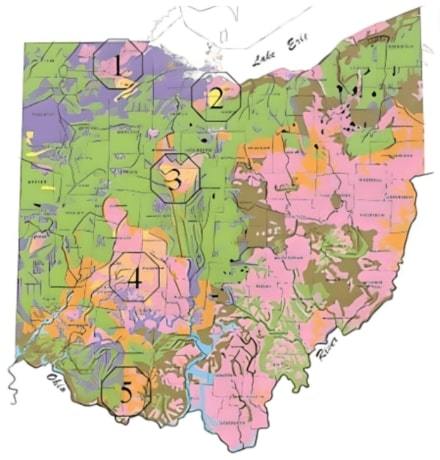
Major Prairie Regions in Ohio:
- Oak Openings (Lucas County)
- Firelands (Erie & Huron County)
- Sandusky Plains (Crawford, Marion, & Wyandot County)
- Darby Plains (Clark, Fayette, Greene, Madison, & Union County)
- Dry Hill Prairies (Adams & Scioto County)
The Shatzel Hall Native Prairie Garden
All of the plants in this area are remnants of native species that grew in Wood County before European settlement. They are well adapted to the soil, weather and seasons of Northwest Ohio. The native plants thrive in this environment, as they are tolerant to both droughts and extreme, fluctuating temperatures. With needing little to no water and care, they are the utmost sustainable plants that live very well in their own control.
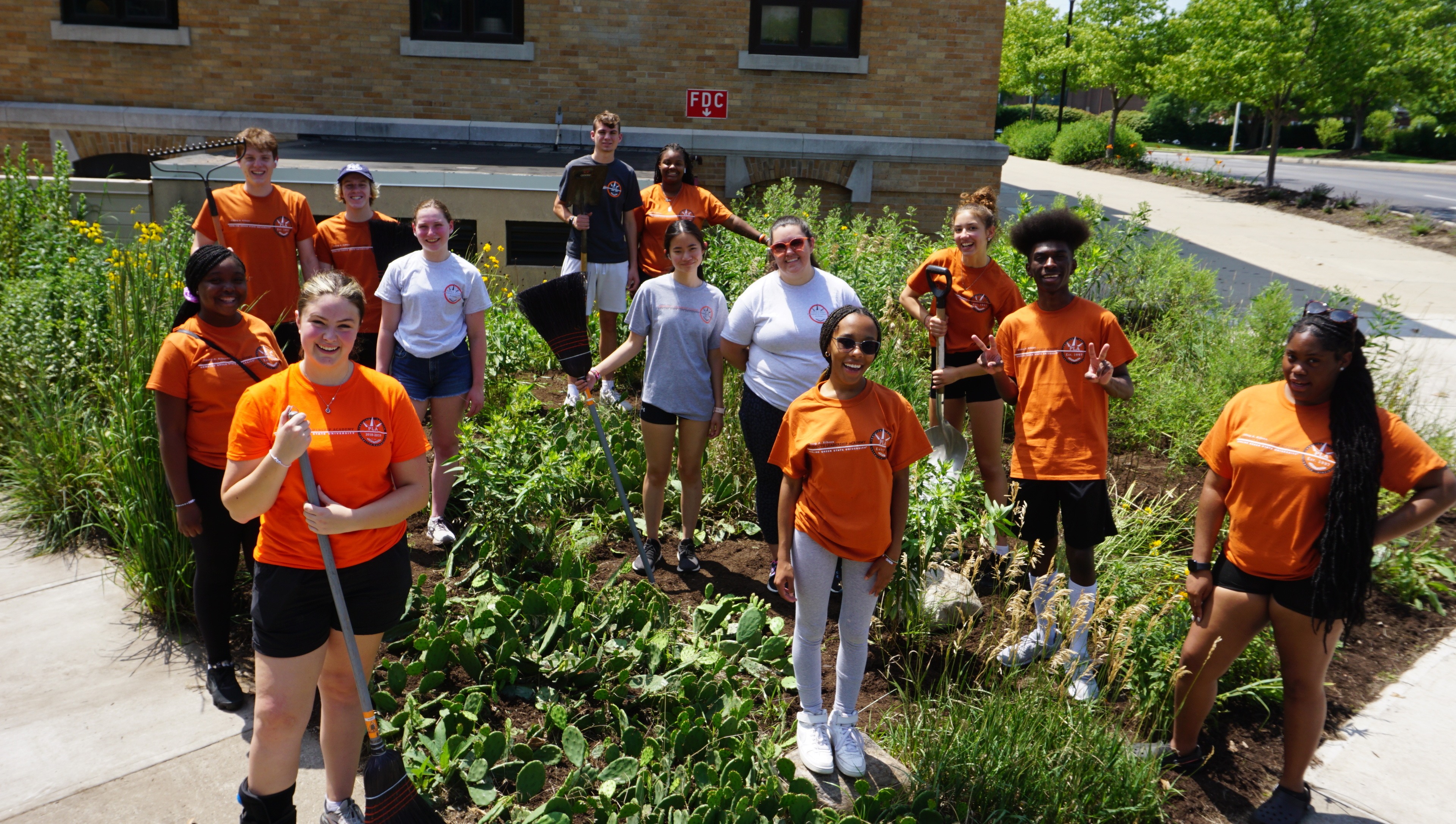
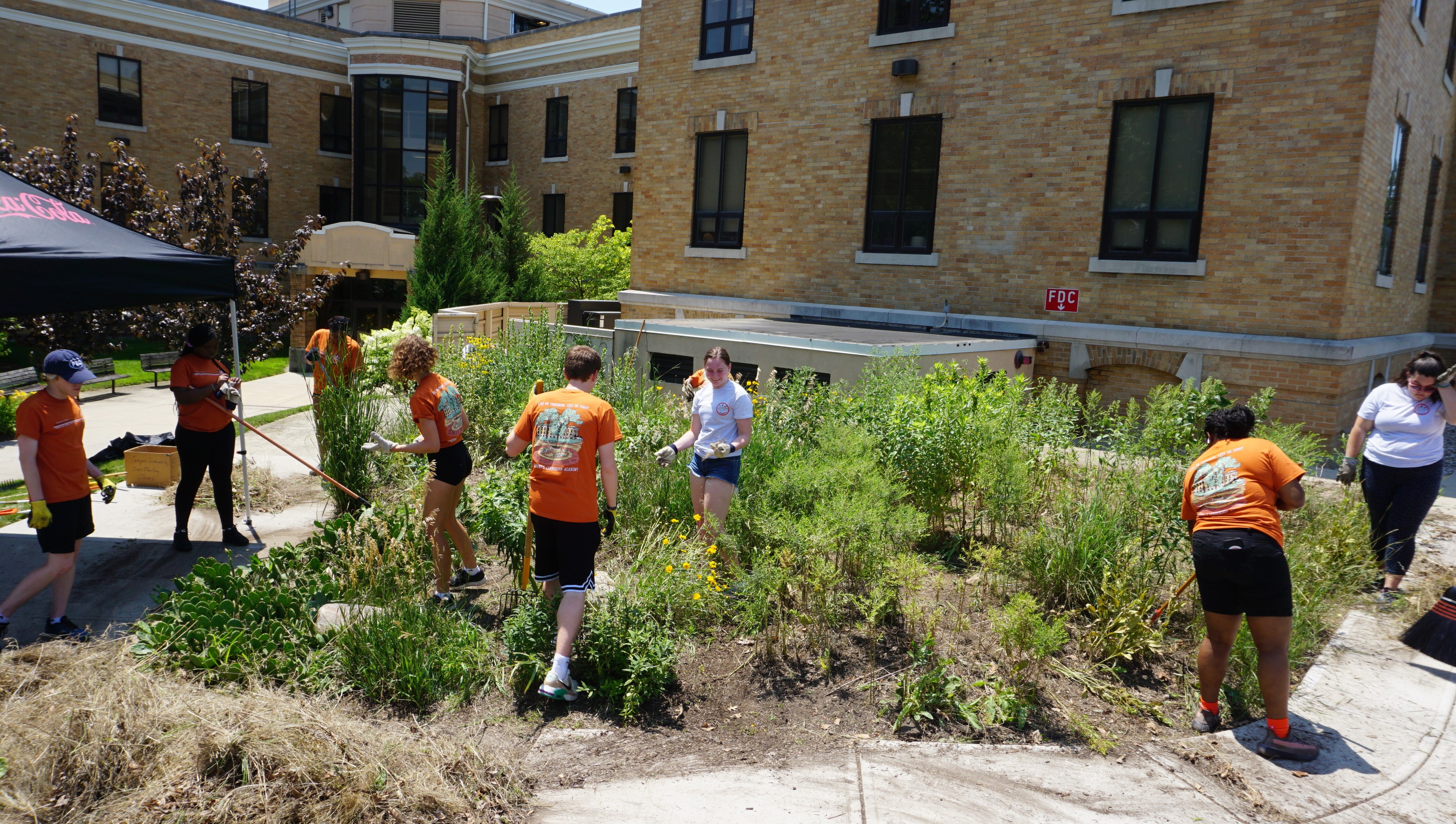
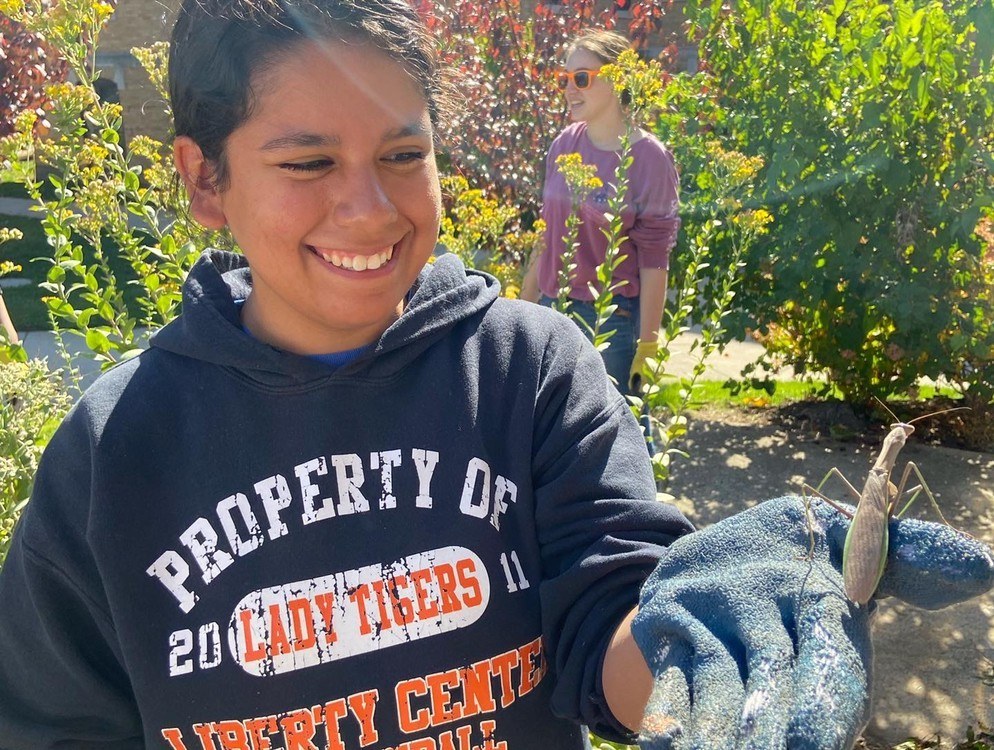
Environmental Action Group maintains and restores the Shatzel Prairie Garden in October of 2022.
Similarly, President's Leadership Academy removes invasive plant species and spreads mulch as a sustainable service project in Summer 2023.
Locally, native plants are in danger of being lost or crowded out by invasive vegetation, or being destroyed by commercial and residential development. Inasive species are unable to thrive in this native prairie, and it is ensured that those invasive species are removed for the health of the native prairie. Through these plants, a piece of local history is preserved.
The Shatzel Hall Native Prairie Garden is maintained and preserved through a collaboration between BGSU's School of Earth, Environment, and Society, Environmental Action Group, and Office of Sustainability.
New signage arrived in September of 2023, highlighting the key benefits of the prairie garden, sponsored by the Office of Campus Sustainability and the School of Earth, Environment, and Society.
In spring 2024, a new addition came in the form of a LiveRoof that is paired right next to the prairie garden! This living, vegetated roof is a demonstration for how we can reimagine roofspace to support the local ecosystem. Green roofs not only make a building more sustainable for energy use and insulation, but also provide a new habitat for pollinators and insects that increase the overall biodivsersity on campus. Check out the before and after!
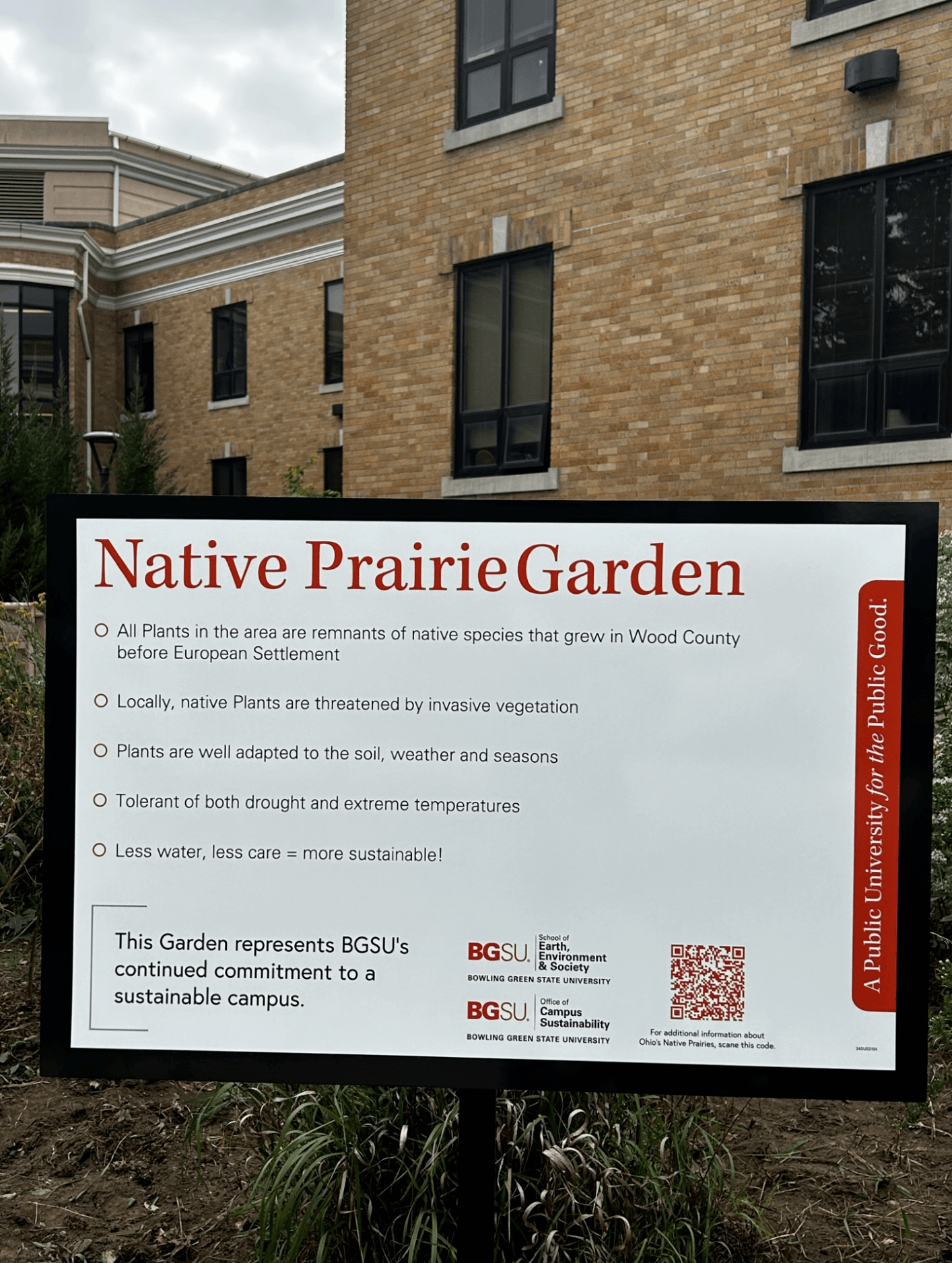
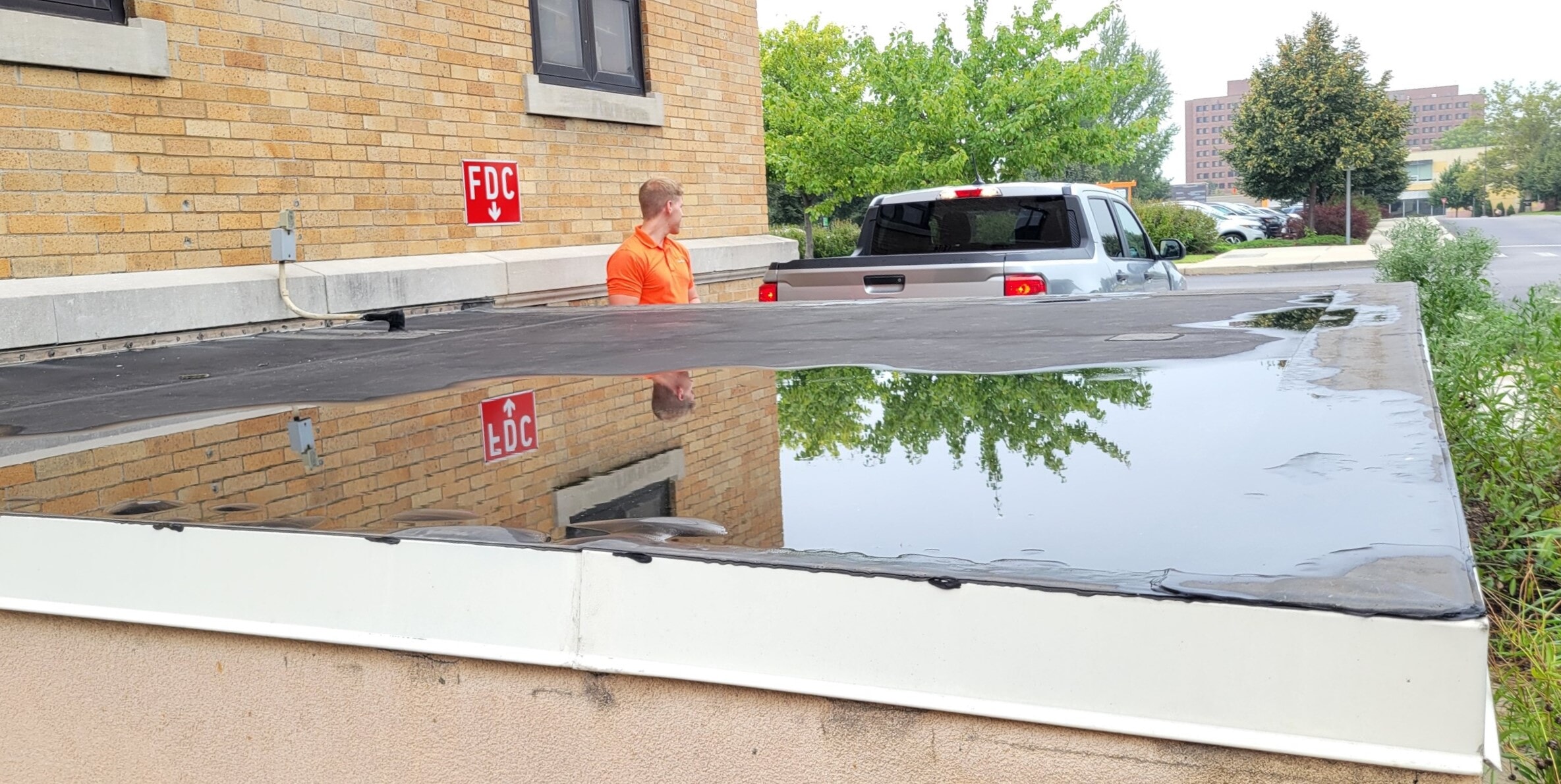
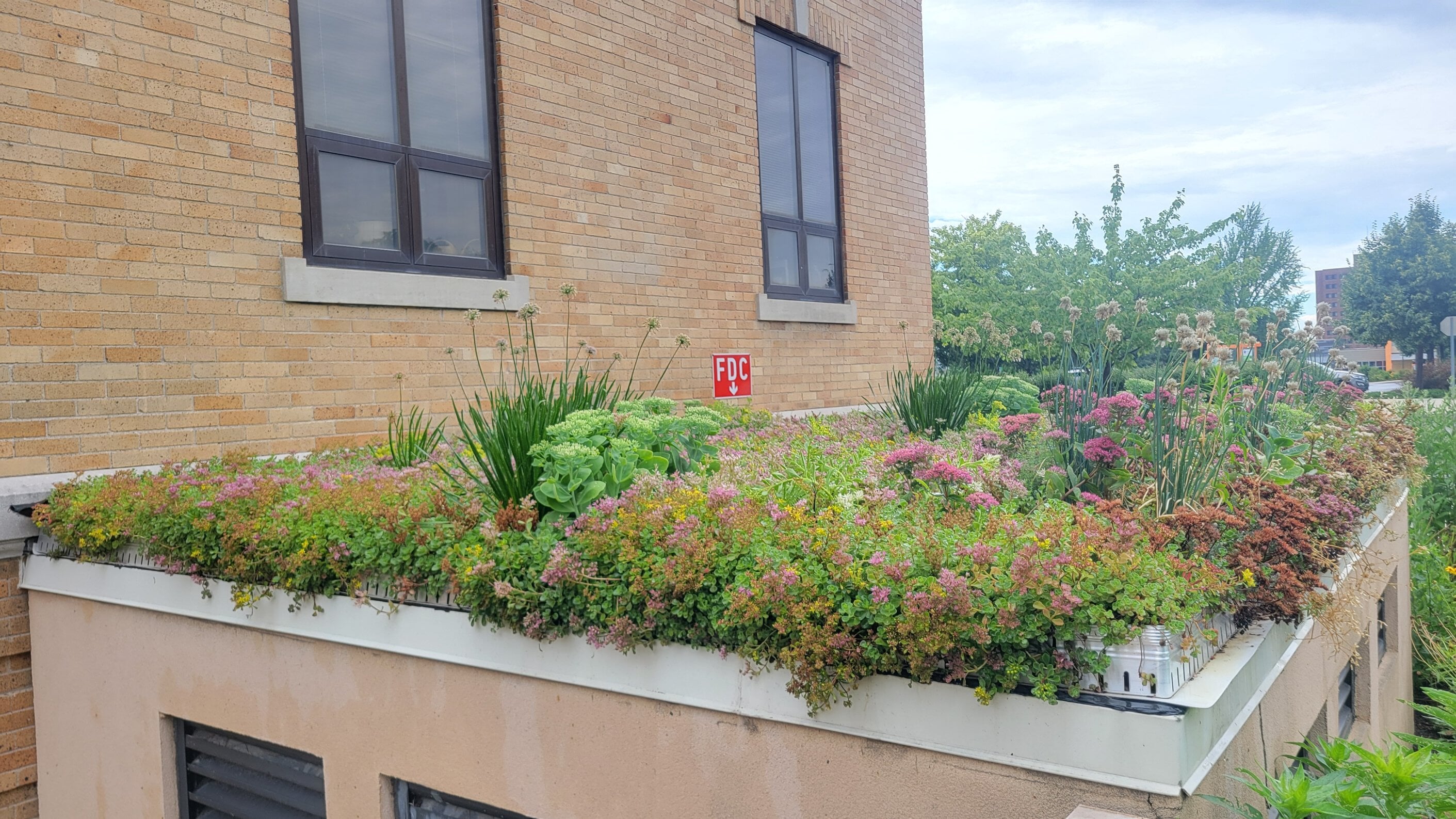
The Shatzel Hall Native Prairie Garden includes the following Ohio native plant species:
○ Big Bluestem (Andropogon gerardii)
○ Black-eyed Susan (Rudbeckia hirta)
○ Culver's Root (Veronicastrum virginicum)
○ Evening Primrose (Oenothera biennis)
○ Foxglove Beardtongue (Penstemon digitalis)
○ Grayleaf Goldenrod (Solidago nemoralis)
○ Grey-headed Coneflower (Ratibida pinnata)
○ Lanceleaf Coreopsis (Coreopsis lanceolata)
○ Ohio Spiderwort (Tradescantia ohiensis)
○ Orange Butterfly Milkweed (Asclepias tuberosa)
○ Oxeye Sunflower (Heliopsis helianthoides)
○ Prickly Pear Cactus (Opuntia humifusa)
○ Purple Coneflower (Echinacea purpurea)
○ Purple Lovegrass (Eragrostis spectabilis)
○ Reticulate-seeded Spurge (Euphorbia spathulata)
○ Rough Blazing Star (Liatris aspera)
○ Smooth Blue Aster (Symphyotrichum laeve)
○ Smooth Brome (Bromus inermis)
○ Sneezeweed (Helenium autumnale)
○ Stiff-leaved Goldenrod (Solidago rigida)
○ Summer Cypress (Bassia scoparia)
○ Tall Boneset (Eupatorium altissimum)
○ Virginia Mountain Mint (Pycnanthemum virginianum)
○ White Panicle Aster (Symphyotrichum lanceolatum)
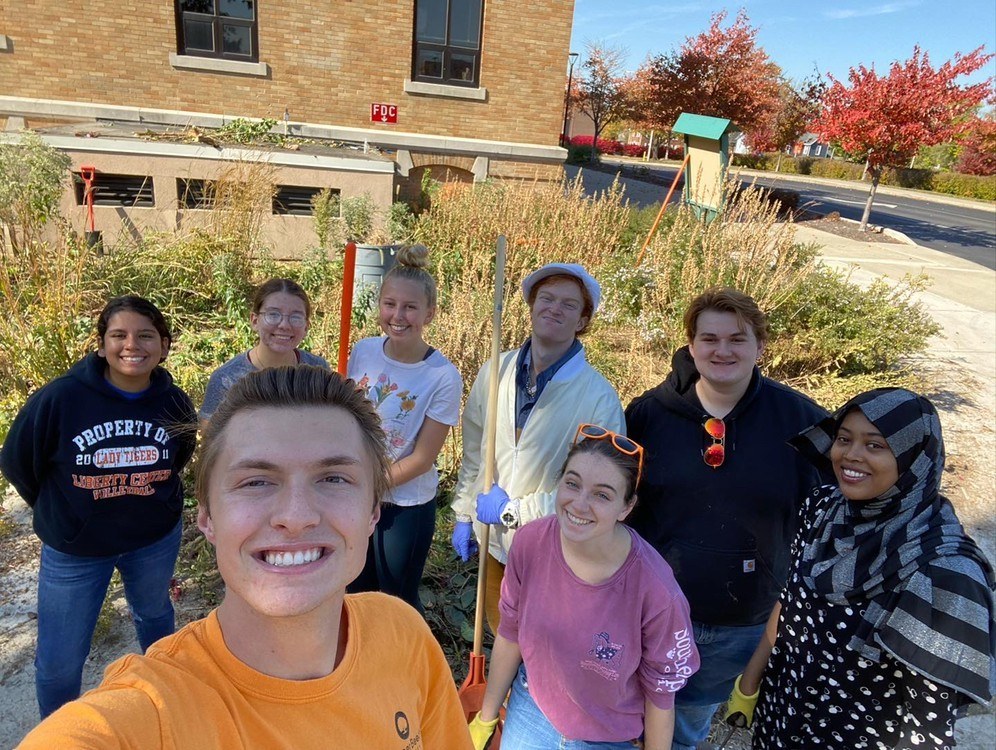
Poe Prairie
Poe Prairie (near the intersection of Poe and Mercer Road) was established as a butterfly and prairie habitat around 1998. The initial planting of native species took place in the early 2000s. Students during that time were invited to spread seeds by hand when it was first begun, resulting in the native species that have grown today. The seeds were collected from local, Wood County, roadside ditches that still had remnant pieces of native prairie habitat long before. Aerial photos back to 1998 show that the woods to the north of the existing prairie have existed since then, but the land currently known as the Butterfly Habitat was farmed prior to 2002. Ever since the property was established as a native prairie, it has been managed by the Department of the Environment and Sustainability, transitioning into the School of Earth, Environment, and Society (SEES), with the support of Campus Operations at Bowling Green State University.
Part of what is now Poe Prairie was used as a construction dump by the university before its transition into a preserved prairie. Students and staff cleared the construction debris and coordinated clean-ups to turn the land into what it is today.
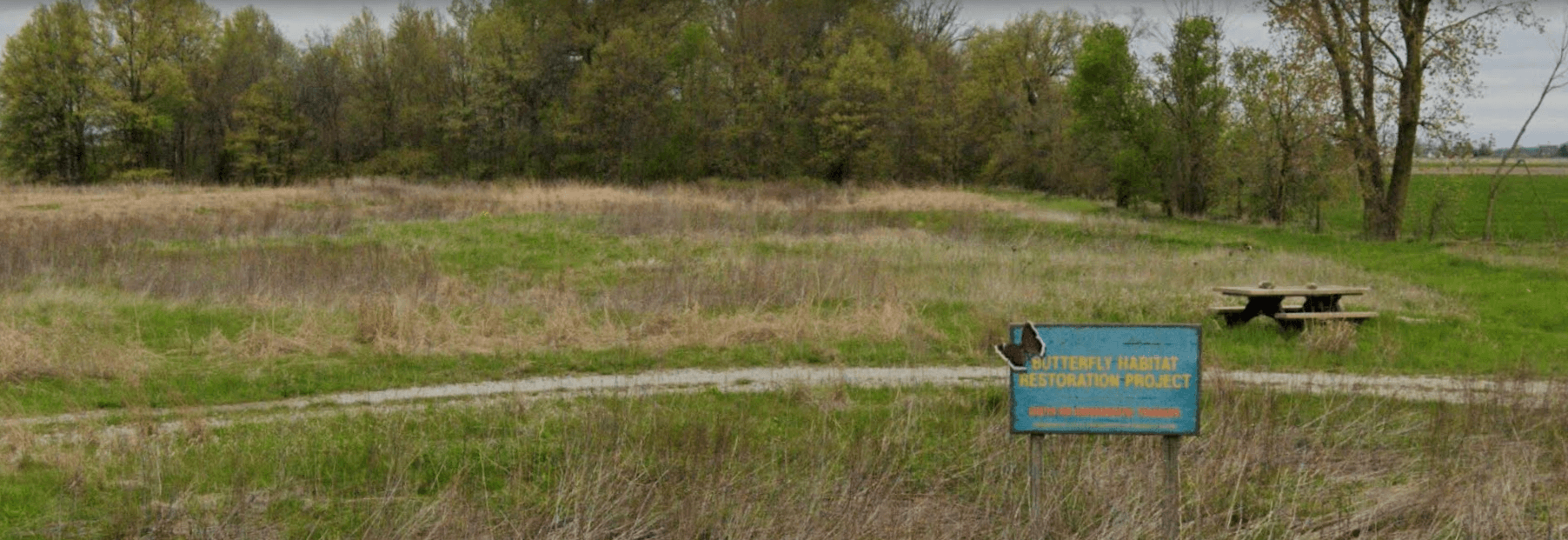
A collaboration between BGSU and the Toledo Zoo and Aquarium has forged a new project to protect and increase conservation efforts of the region’s wildlife and natural habitats, while expanding learning and research opportuinites to Falcons on campus. The project is called Project PRAIRIE, and will continue under the Toledo Zoo and Aquarium's, Wild Toledo Program.
Project PRAIRIE aimed to increase the production of native plants on 14 acres of land on the university’s campus along Poe Road and Mercer Road. Once farmland, this area was transformed into a now thriving, biologically diverse prairie ecosystem and formal native landscape. These native plants create pollinator habitats for numerous pollinator species such as bees and other flying insects, but more specifically, butterflies. A large portion of this land is now a butterfly habitat, that encourages butterflies to thrive and pollinate in a cared-for environment, suited to them.
A part of the School of Earth, Environment, and Society's academic program, undergraduate students take part in learning outside the classroom at the Poe Prairie. Dr. Soto (shown to the right) instructs an Environmental Field and Laboratory Method course, that allow students to gain first-hand experience of field research in a natural laboratory and practical environment.

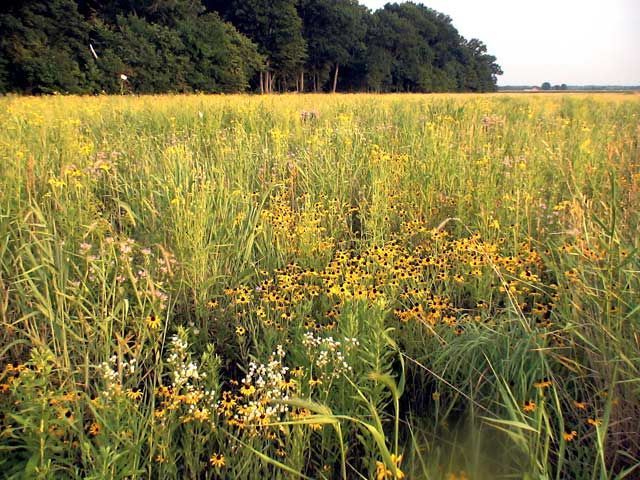
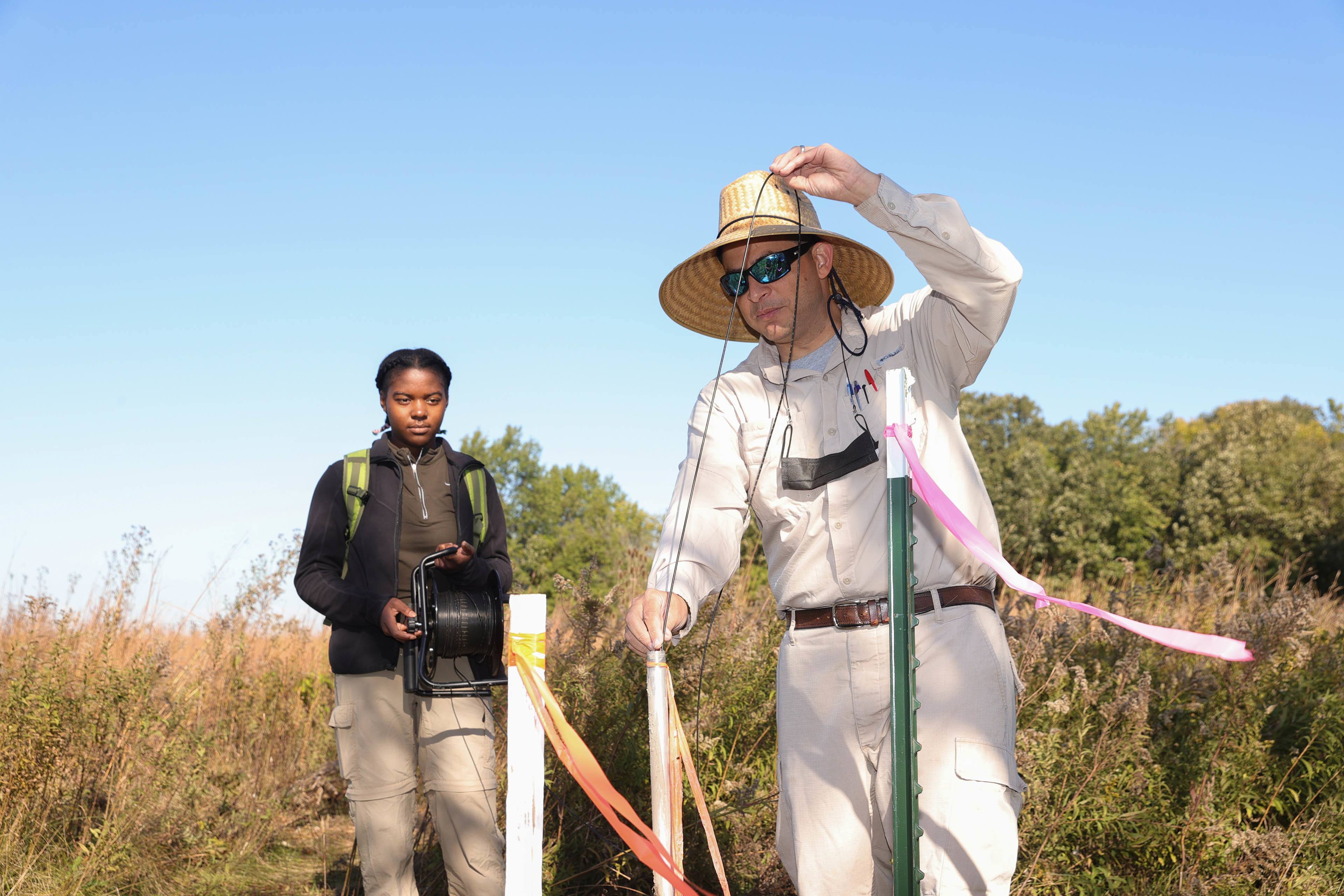
University House Prairie
Behind the official residence house of the President of Bowling Green State University, is a short-grass prairie that is in the midst of returning to its native state. Located off of Wintergarden Road and across from the Wintergarden Park and Nature Preserve, this space has numerous Ohio native species, ranging from big bluestem, fragrant mountain mint, pearly everlasting, to wild bergamot. This prairie is seasonal tolerant, meaning it grasps a brownish color during late autumn and throughout winter (shown below), with the grasses becoming green and vibrant in the summer. Controlled burns are common place in this prairie, and regularly happen in mid to late spring, to ensure maximum control and dead material loss.
University House Prairie is arranged as a learning laboratory for students, particularly in Dr. Helen Michaels's Restoration Ecology class. Students are able to observe and identify Ohio native plants while removing the non-native and invasive ones. This hands-on, field laboratory experience helps prepare students for real-world careers within environmental and sustainable areas.
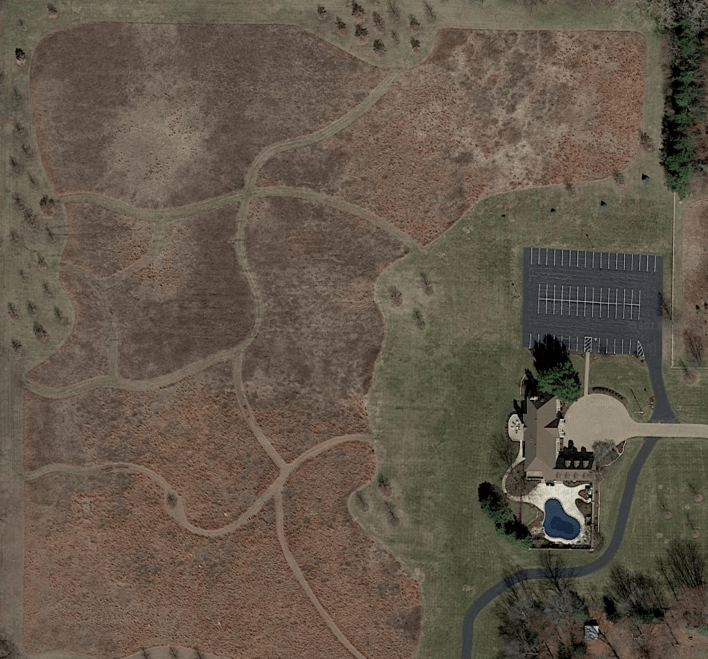
Updated: 06/06/2025 08:58AM
